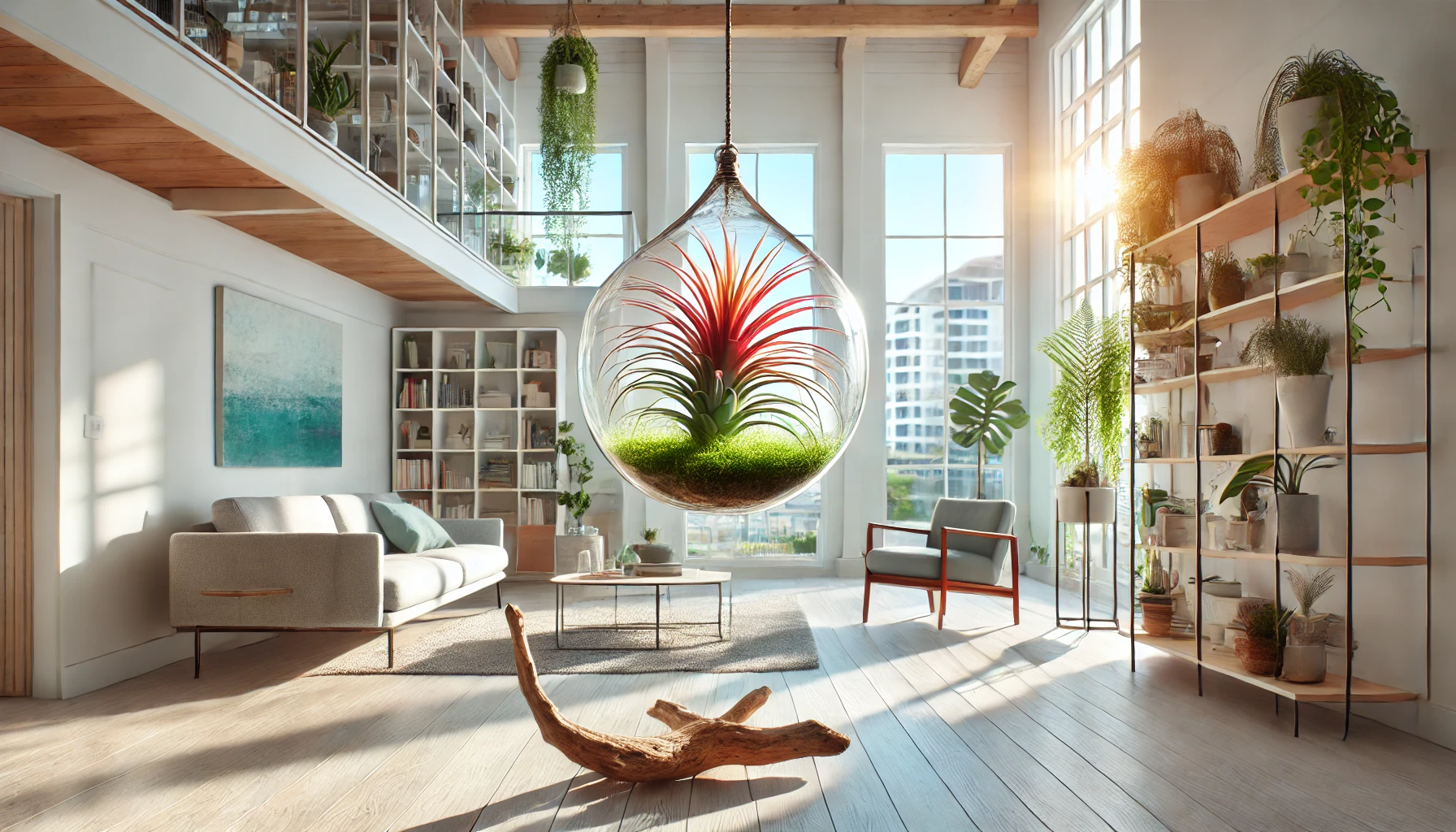
Air plants, formally known as Tillandsia, are fascinating and versatile plants that thrive without soil, drawing nutrients and moisture from the air around them. These intriguing plants are part of the Bromeliad family and can vary significantly in size, ranging from just a few inches to over three feet in height. With their striking appearance and minimal care requirements, air plants make a wonderful addition to any home or office.
History and Ideal Growing Conditions
Air plants originate from the forests, mountains, and deserts of Central and South America. They have evolved to grow in diverse environments, often found clinging to trees, rocks, and even cliffs. Their adaptability to various conditions makes them highly resilient and easy to care for.
To thrive, air plants require bright, indirect light, making them perfect for indoor environments. They do best in a room with plenty of natural light, but not direct sunlight, which can scorch their leaves. A humid environment is ideal, mimicking their natural habitats, though they can adapt to drier conditions with proper care.
Toxicity and Pets
One of the great advantages of air plants is their non-toxicity, making them safe for homes with pets. Unlike many houseplants, air plants pose no threat to curious cats or dogs who might take a nibble. This makes them a worry-free option for pet owners who want to add greenery to their living spaces.
Best Practices for Caring for Air Plants
Air plants are incredibly low-maintenance, but they do have specific needs to keep them healthy and vibrant. The key aspects of their care revolve around watering, humidity, light, and temperature.
Watering and Humidity
Air plants absorb water through their leaves, not their roots, so traditional soil-based watering techniques won’t work. Instead, it’s best to mist your air plant thoroughly two to three times a week or soak it in water for about 20-30 minutes once a week. After soaking, shake off any excess water to prevent rot and allow the plant to dry completely before returning it to its display spot. In particularly dry environments, more frequent misting may be necessary to maintain adequate humidity levels.
Soil, Light, and Temperature
Air plants do not require soil, which allows for creative and decorative display options, such as mounting them on driftwood, placing them in glass terrariums, or even suspending them in the air. When it comes to light, bright, indirect sunlight is best. Direct sunlight should be avoided as it can damage the plant. Artificial light can also suffice if natural light is not available, but ensure it is bright and not too harsh.
Temperature-wise, air plants prefer a range between 50-90°F (10-32°C). They are not frost-tolerant, so if you live in a cooler climate, make sure they are kept indoors or brought inside during cold weather.
Common Problems and Remedies
Despite their hardiness, air plants can encounter issues, the most common being dehydration and rot. If the leaves start to curl or the plant appears shriveled, it likely needs more water. Conversely, if the base of the plant is soft or discolored, it may be experiencing rot due to overwatering or poor air circulation. Ensuring the plant dries thoroughly after watering can help prevent these problems.
Propagation and Benefits
Air plants can be propagated through offsets, commonly known as “”pups,”” which form at the base of the parent plant. Once these pups are about one-third the size of the parent, they can be gently separated and grown on their own. This makes it easy to expand your collection or share with friends.
Besides their unique appearance and easy care, air plants offer several benefits. They can improve indoor air quality by absorbing pollutants and releasing oxygen. Their minimalistic care requirements also make them ideal for busy individuals or those new to plant care.
Final Thoughts
Air plants are a delightful addition to any indoor space, offering beauty and interest with minimal maintenance. Their adaptability and resilience make them perfect for plant enthusiasts of all levels. Whether you’re looking to start a new plant collection or add a touch of greenery to your home, air plants are a versatile and rewarding choice.



